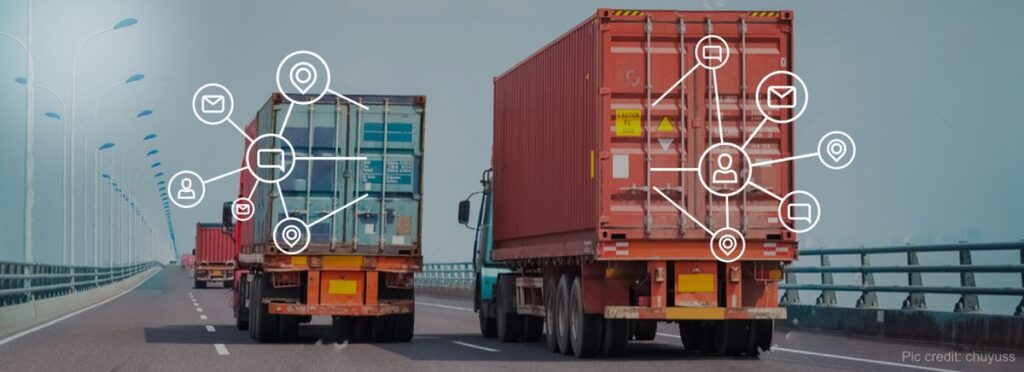The world is facing supply chain disruptions. But what exactly is the reason? Technology has helped us enjoy instant gratification; be it instant delivery, or product tracking, everything is a piece of cake. However, over the past two years, these services have been witnessing disruption. Many businesses shifted their approach to Supply Chain ERP Systems to manage their business with full efficiency. Dynamics 365 for Finance and Supply Chain Management System is one of the best Supply Chain Management Software. However, what is the reason behind this? Certainly, a lot of factors, but businesses pulling out their interest in China is the major reason. Even though it is not a new thing, it still seems to have caught pace in recent years (after the COVID-19 outbreak). An Overview of the Current Situation For over two decades, China has dominated the manufacturing industry, contributing to shipping lanes and affordable labor rates. Therefore, working in or with China-made economic sense. However, over the last two years, China was hit with massive ordeals including COVID-19, increased geopolitical tensions, and high traffic. These factors lead to the departure of large manufacturing organizations from across the globe. Innovation in technology even for supply chains such as Supply Chain ERP Systems has promoted remote work. Anyone can work efficiently without having to move abroad. Credits to AI (Artificial Intelligence) advancements and robotic developments, for more manageable labor costs. COVID-19 has so far pushed Chinese manufacturing to the verge of shutting down. Upstream suppliers failed to get raw materials on time, which caused delays. When China opened again, US and Europe were now shut down leading to another out-of-sync scenario. COVID-19 impacted everyone in the world, irrespective of their industry. From teachers to doctors, to waiters, to childcare takers, to baristas, nobody could escape from this. Manufacturing perhaps hit the hardest due to supply chain issues. However, many manufacturers still managed to survive. They embraced more advanced technology such as Manufacturing ERP Software, and CRM for Manufacturing Industry. Some adopted a unified platform that provides ERP and CRM on the same platform such as Dynamics 365 for Finance and Supply Chain. Supply Chain ERP Systems for Your Rescue Having an enterprise system that can cope with demand and supply variability has become a must-have in today’s scenario. Hence, Supply Chain ERP Systems like Dynamics 365 for Finance and Supply Chain, Cloud Supply Chain ERP Software can help you with this. With this Top Supply Chain Management Software, you can manage multiple suppliers. Furthermore, you can seamlessly manage data with automation, which is time-consuming, frustrating, and impossible using disparate systems in current scenarios. Flexibility and foresight are critical requirements to tackle uncertainties. Cloud Supply Chain ERP Systems provides a digital supply chain network that enables a single source of truth. Followed by artificial intelligence to power prescriptive and predictive analysis. Companies can easily source inventory and raw materials to stay afloat and ahead of the competition. Using Dynamic technology helps with planning and execution. Business owners need to tackle disturbances and stay ahead of troubleshooting solutions for new processes. New technology comes up with new challenges along with its solutions. D365 solutions are reinforced with Power BI tools which analyze the customer’s spending pattern, also how the product moves throughout the supply chain. Logistics play a vital role in the supply chain. Without efficient logistic management, the supply chain is bound to face inconveniences. ERP for Transport and Logistics offers complete logistics management. The user can find the shortest route possible to save time and fuel. You can also track and trace your vehicle’s current location, as well as check your driver’s background. Track your vehicle’s mileage with Transport ERP Software. How can cloud ERP Help in Successfully Forging Links in the Supply Chain? Having a global supply chain is one of the biggest achievements over the past three decades. To think of it, just about a few decades ago, it was unbelievable to experience an organized and coordinated system of raw materials, fabrication shops, and component manufacturers across the globe. However, this convenient and connected system was as well delicate. It withstood all the natural outrages; be it earthquakes, typhoons, hurricanes, closed ports, and so on. Supply Chain ERP Systems contribution to withstand the shocks and uncertainties. With robust and connected supply chain management, you can streamline this chain and overcome all the hurdles. Tackle the Great Resignation Enforced by COVID Firstly, the COVID-19 outbreak was detected and reported in China, the region where most of the world’s raw materials and finished goods come from. This outbreak led major manufacturing plants to shut down throughout the world. As the pandemic forced lockdowns everywhere, certain products became scarce. Therefore, producers raced to search for an alternative. However, the pandemic continued, and what was once a problem in an isolated region became a global issue. Followed by more factories and mines being shut down, raw material became limited, and for some, unavailable. Even among producers with adequate raw material, laborers began falling sick. Agonized by the hard-working environment, entered what has been depicted as the great resignation. Supply Chain ERP Systems assists in streamlining manufacturing processes by automating manual and monotonous tasks while relieving staff from too much hard labor. It can even tackle labor shortages as it automates a pretty good sum. Therefore, allowing you to engage your labor in other profit-generating activities. This Cloud ERP Solution needs less training, as it works on an intuitive interface. Hence adapting to this ERP in Supply Chain Management is easier than other software. Win the Battle Against Uncertainty with Cloud ERP Cloud Supply Chain ERP Systems help beat frequent uncertainties. ERP like Dynamics 365 has embedded Power BI which collects data from different touchpoints and brings them all into the center. Then, it created insightful and actionable reports on the business and customers. Further, allowing you to understand your strengths and weaknesses more in-depth. Leveraging this data defines how you quickly respond to perspective and sudden threats. You can










